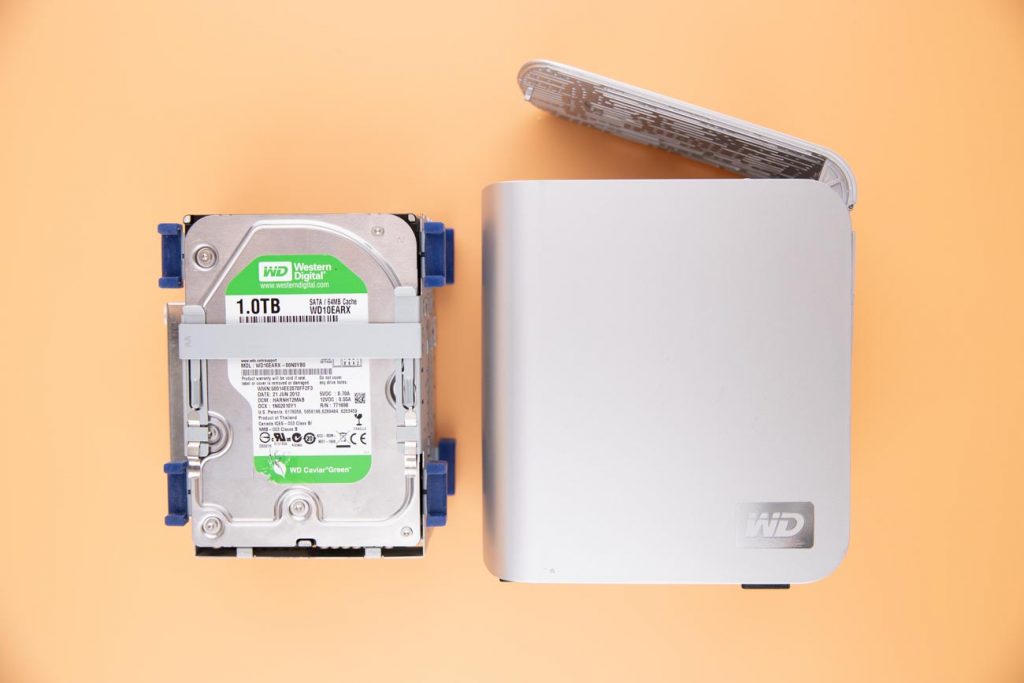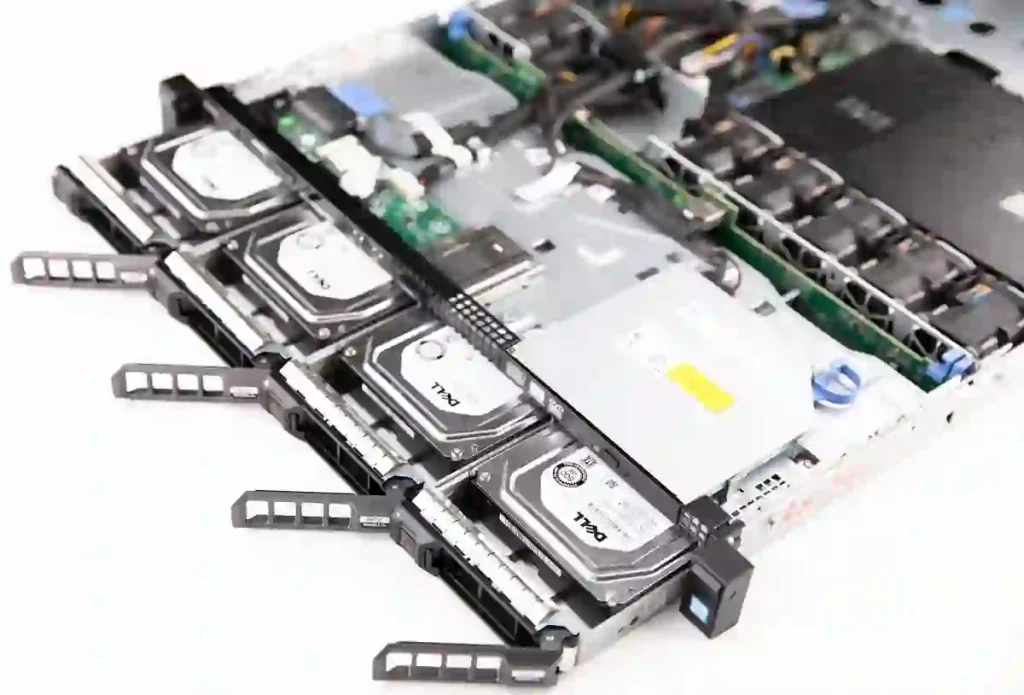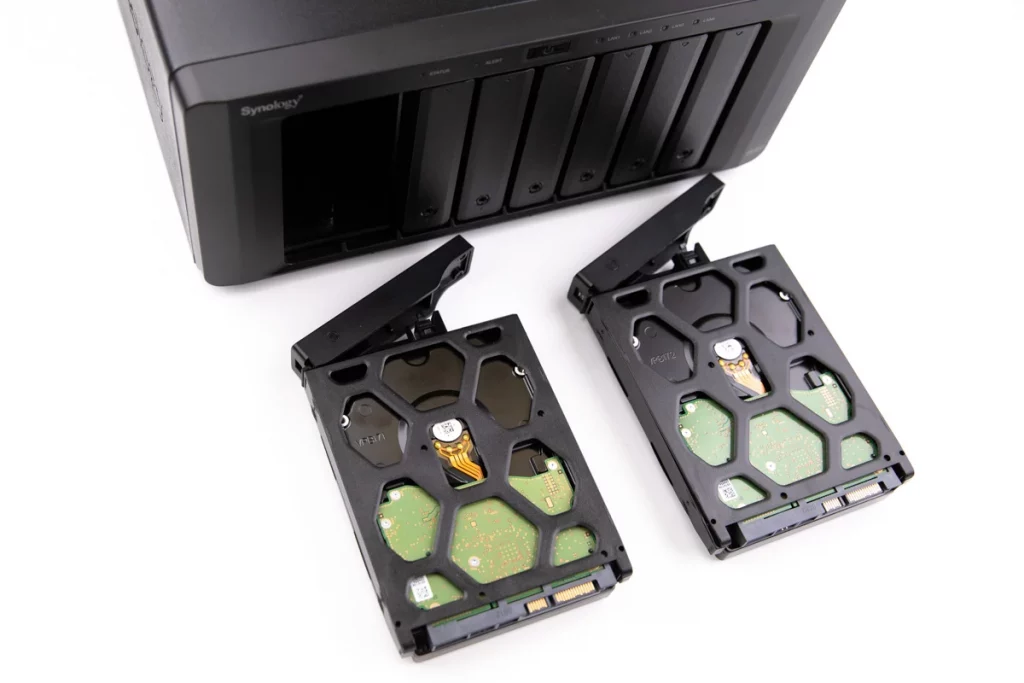A Network Attached Storage is a reliable solution for home users and small-sized enterprises. NAS offers its durable work, data protection, and high storage of capacity due to the implemented RAID system.
A Redundant Array of Independent Disks is a flexible solution for any type, brand, and model of NAS. Used for better performance, RAID delivers several benefits for NAS devices. However, to obtain all the advantages of RAID usage on your device, it is essential to find the most efficient RAID level.
NAS with RAID - Various RAID Configurations
RAID 0
RAID 0 is a combination of two or more hard drives within the system. These drives are used to increase the storage capacity and performance but do not provide fault tolerance. Hence, a fault within one of the drives results in the inaccessibility of all the files in the array.
Our team does not recommend using RAID 0 in your NAS, as it provides less reliability than other levels. This level splits data across multiple drives, so there is no complete copy of your data stored somewhere safe.
In conclusion, using RAID 0 on NAS is possible, but it is risky. It does not provide redundancy for the device, which makes it susceptible to complete data loss situations.
RAID 1
RAID 1 often consists of two drives. Data is mirrored, so the system provides fault tolerance and has lower consequences of failure.

Read performance increases and write performance is equal to the speed of the individual hard drive.
Failure of a single drive does not result in complete loss of data. RAID 1 is used when fault tolerance is a high priority and capacity or performance is of secondary importance.
Read performance increases and write performance is equal to the speed of the individual hard drive.
Failure of a single drive does not result in complete loss of data. RAID 1 is used when fault tolerance is a high priority and capacity or performance is of secondary importance.
If we consider RAID 1 usage in NAS, it is preferable to use it for NAS with two bays. However, if you have an opportunity to use more drives in your Network Attached Storage, then we recommend considering other RAID levels.
RAID 5
RAID 5 is one of the most widespread levels. It provides fault tolerance and a high level of performance. RAID 5 requires at least three disk drives. This level offers resiliency if one drive fails and data from it is restored using parity. After the recovery, the data is distributed to the remaining disks.
However, the failure of one of the disks does not stay unnoticed, as the read/write speed significantly decreases. RAID 5 is a great solution when capacity and cost are more significant factors than performance.
For NAS, RAID 5 is a great option, as it delivers many benefits. However, when installing the disks within a system, a user must ensure that two of the drives have the same capacity so that the third one is saved for redundancy.
RAID 6
RAID 6 is similar to RAID 5, but it uses an additional level of striping and continues to work even if two drives fail. At least four disks are required for RAID 6. Because of its increased fault tolerance, RAID 6 has a lower performance compared to RAID 5. RAID 6 is the preferred choice when space and cost are of great importance, and you need to ensure resiliency in the event of hard drive failure.
However, our team does not recommend using RAID 6 for less than six-bay NAS systems.
In this case, more drives will be allocated for redundancy instead of storage.
RAID 10
RAID 10 combines the benefits of RAID 1 and RAID 0. Read and write performance is increased, but only half of the space is available for data storage. Four or more disks are required so that NAS can provide high performance and fault tolerance.

In this case, more drives will be allocated for redundancy instead of storage.
RAID 10
RAID 10 combines the benefits of RAID 1 and RAID 0. Read and write performance is increased, but only half of the space is available for data storage. Four or more disks are required so that NAS can provide high performance and fault tolerance.
RAID 10 delivers resilient operation when multiple disks fail, as long as these failures do not occur in the same subgroup. RAID 10 is the best solution for applications with high I/O requirements, such as database servers.
RAID 10 is a reliable option for NAS devices with more than eight bays. Of course, it can be used with fewer bays, but it is more beneficial to use RAID 5 or 6 for these systems.
What is the Best NAS RAID Option?
One of the most flexible solutions which can suit any of your requirements is RAID 5. This level provides redundancy and high storage capacity for your device, slightly affecting the performance. Similar to RAID 5, RAID 6 is also a recommended option for you, with the additional redundant drive.
In general, our team recommends choosing a RAID level based on your needs for storage. It is essential to estimate what you expect from the NAS and, based on this, make a decision. This way, you will choose the most efficient RAID system for your Network Attached Storage.
